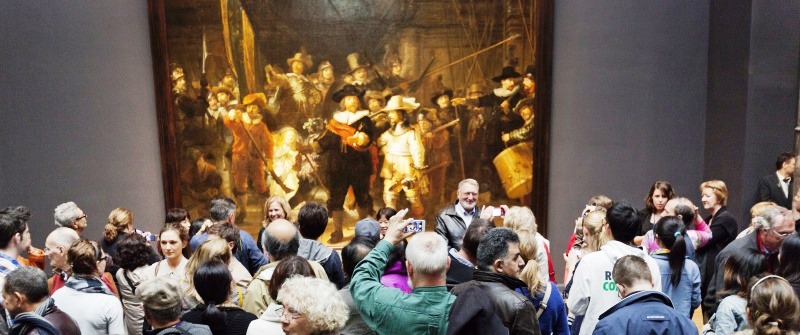
08 Jun Blog: Placing Dutch Caribbean heritage on a global platform: Wiki Goes Caribbean
By Valika Smeulders
What is seen as Dutch national heritage is very much shaped by academically trained heritage professionals and the audiences they speak to and reach. As a curator at the Rijksmuseum, I see thousands line up on a daily basis to admire Rembrandt’s The Night Watch (Nachtwacht, pictured). As a KITLV researcher focusing on the Caribbean presence in the Netherlands, I also get to experience a completely different form of heritage. It is central to the identity of 400,000 people in the Kingdom of the Netherlands, living both on the six Caribbean islands and in Europe. Notwithstanding this reality, it has never had the exposure provided by a national museum drawing two million visits per year. It is heritage that is mostly shared by its carriers, through performances and daily life, but that is rarely presented in Dutch heritage institutions as part of 400 years of Dutch history. What would happen if the role of heritage professionals and the value attributed to ticket sales were to be challenged? If the owners of Caribbean heritage were to step up on to a global stage and present their heritage to global audiences freely? Would that influence views on what constitutes Dutch national heritage? Would that influence views on who the experts on Dutch national heritage are?
Tangible vs intangible heritage
Material heritage of the colonial era easily conveys stories about the dominant group, about power and wealth, while the related stories of the oppressed come second. With the drawing up of the World Heritage Convention, a listing of mostly monumental buildings, UNESCO unintentionally reinforced this top-down focus in the heritage field for over four decades. Now, the 2008 introduction of the Intangible Cultural Heritage Convention with its own listings might be changing that misrepresentation, as culture that was created in spite of colonial repression is now listed in its own right. Nonetheless, to further increase the visibility and change the perception of Dutch Caribbean heritage, more than just recognition is required. Also needed are larger platforms and more exposure for broader groups of voices.
Digital accessibility
As part of that process, Wikimedia could be a powerful tool, as it is the largest democratic platform for the sharing and building of knowledge, frequented by seven million people daily. The catch is that among the current 80,000 volunteers working on Wikimedia worldwide, knowledge of Caribbean heritage is scarce. To bridge the gap between this platform and Caribbean heritage expertise, Wiki Goes Caribbean was born, with funding by the Dutch Ministry of Education, Culture and Science. The project is a cooperation between UNESCO, Wikimedia, and heritage institutions including the KITLV’s Traveling Caribbean Heritage project and its consortium of partners working in the Netherlands and the Dutch Caribbean. The project aims to inspire and train Caribbean heritage practitioners and experts throughout the Dutch Kingdom. Participants will be writing contributions in Dutch, English and Papiamentu/o.
Wiki Goes Caribbean
The first participants in Aruba, Bonaire and Curaçao have just completed their training, while in the Netherlands an introductory tour including meetings at the Rijksmuseum, Nationaal Archief and the Nationaal Museum van Wereldculturen has just finished, to be followed by a training session (in Dutch) in June. You can still join by following this link, or register to be kept posted of upcoming activities, such as the Wiki Goes Caribbean writing activities scheduled for September. For Traveling Caribbean Heritage, this is an exciting step in a process of diversifying and democratizing the building of knowledge, which in turn makes an interesting subject for further study.
Pictured: Visitors in front of Rembrandt’s ‘The Night Watch’ at Rijksmuseum Amsterdam. Photo: Rijksmuseum Amsterdam.
(Valika Smeulders is a postdoc researcher at the KITLV, studying the dynamics of heritage formation in relation to Aruba, Bonaire and Curaçao in the Netherlands, and is a curator for the Rijksmuseum’s exhibition on the Netherlands and slavery in 2020.)




No Comments